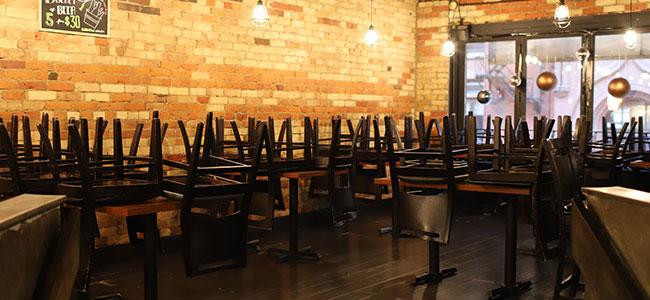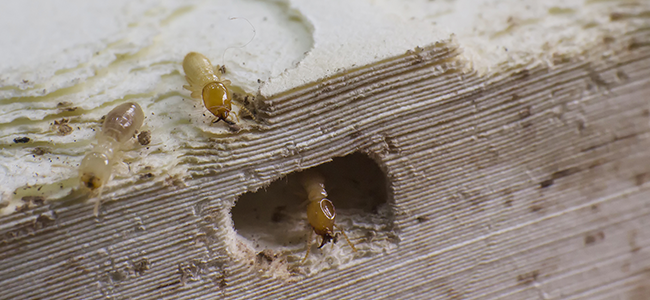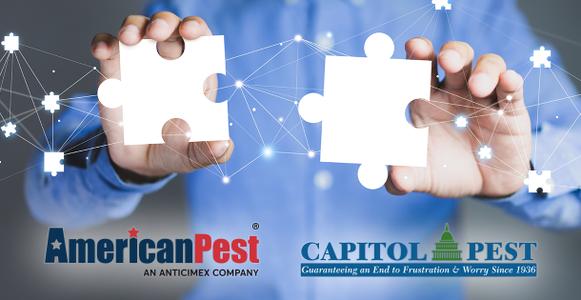
The Best Pest Protection For Your Washington D.C. Business
12/10/2021
It takes a lot to open and maintain a business. Pests can take your entrepreneurial dreams away. It’s best to stay ahead of them by learning ...
READ MORE >
03/19/2021

Bird watching is a popular hobby and for good reason. There are many beautiful birds in the Washington D.C. area and they can help bring people closer to nature in urban locations where people might otherwise feel a bit disconnected from the environment.
Despite all the wonderful birds that call D.C. home, not all birds are a positive influence on our city. There are many pest birds around that can cause several problems, especially for business owners. If you have a business in Washington D.C. and birds are spending too much time on your property, you need to know the key to keeping pest birds away from your Washington D.C. business.
In urban settings like Washington D.C., birds are a natural part of the landscape. If you’re not sure what we’re talking about, think of the movie Home Alone 2: Lost in New York. Pigeons are a large part of the plotline and end up being central to the resolution of the story.
In most cases, pest birds are so prevalent in the city that people either pay no attention to them at all or give them extra attention by making bird watching and feeding one of their hobbies. There are several types of pest birds in our area. Some are more common than others, but all three are found in the Washington D.C. area.
The most well-known city-dwelling pest bird is the pigeon. Pigeons vary in color but are usually gray with two black bands on their wings and an almost iridescent appearance around their necks. They have small heads and beaks with beady eyes. Their feet are red. Pigeons can grow to about a foot in size and typically weigh around 10 to 13 ounces.
Pigeons are dependent on humans, both for food and shelter. They mostly eat grain-based products and are fed either directly by humans or indirectly by humans when food is dropped on the ground or when food items are thrown away in open garbage bins or dumpsters.
When in urban areas, pigeons are often found in parks and on sidewalks. They roost in areas up off the ground, usually under bridges or on the ledges of buildings. They can also nest inside buildings if they have access to the interior. Pigeons tend to congregate in large groups. They can mate at any time of year, but most often do so in the spring and fall when they will lay one to two eggs at a time.
According to Pest World, starlings were brought to the United States from Europe in the late 1800s in an attempt to bring the animals that Shakespeare mentioned in his works to America. Since then they have spread throughout the country and have become a pest bird in both rural and urban settings.
Starlings are dark with light-colored specks. Their colors change from summer to winter, becoming more heavily speckled in the colder months. They have yellow beaks and orange feet. Starlings are on the smaller side, growing up to around eight inches, but weighing only two to three ounces.
Starlings have a varied diet. They will eat grains, seeds, fruit, and small insects. Humans also contribute to their feeding habits because these pest birds will eat food dropped on the ground or found in the trash.
Starlings tend to gather in groups and can often be found perched along gutters or utility lines. They build nests in holes they find in trees or buildings. Starlings typically have two broods a year, consisting of four to six eggs each.
House sparrows are commonly found in urban areas. They are small, chubby looking birds that are mainly grayish-brown in color, with some darker markings. They have round heads and black beaks. Their feet are tan to brown in color. Sparrows are small, usually not growing over seven inches and they usually only weigh about one ounce.
Like starlings, sparrows eat a variety of foods. They like grains, seeds, and fruit, and will also eat insects. They will also eat food discarded by humans, which makes it easy to understand why they thrive in urban settings.
House sparrows build their nests in holes they can find in a variety of areas. This often includes buildings, roofs, or even within vines growing on the sides of buildings. They are social birds that spend time in large groups. They can have up to four broods a year, typically with four to five eggs per brood.
Because pest birds are so common in Washington D.C., people tend to become used to them and thus don't give them much thought. Although this works out well for the birds, it’s not good for the people who live and work in the locations that pest birds frequent. That’s because pest birds actually cause a lot of problems.
First, pest birds are dirty animals that spread a lot of different diseases. They do this in several ways. Although they can carry diseases on their bodies, they most often spread them through their droppings. Pigeons are known to spread toxoplasmosis, salmonella, and food poisoning. Starlings have been linked to over 25 diseases, including encephalitis, Newcastle disease, and chlamydiosis. Sparrows can also spread salmonella and e.coli, among other things. Furthermore, all of these birds’ droppings can grow a fungus that can cause histoplasmosis. Histoplasmosis is a serious and sometimes fatal lung infection.
In addition to the diseases that pest birds can transmit, they can also cause illnesses in other ways by the spreading of parasites. Parasites, such as fleas, mites, lice, and ticks, often live on pest birds. When these parasites fall or climb off the birds, they can then get onto nearby humans. Although some parasites, like lice, aren’t known to spread disease, many do. Ticks can spread Lyme disease, Rocky Mountain spotted fever, babesiosis, and many other illnesses. Fleas can spread typhus and tapeworms. These are just a few of the secondary illnesses you may end up with due to pest birds.
Although the health risks are enough to make pest birds a serious problem, they are not the only issue that birds cause. Pest birds can also threaten your safety. People have been known to slip on bird droppings, causing them to fall and injure themselves.
Additionally, pest birds are a serious problem because of the damage they can cause to buildings. Their droppings are highly acidic and can erode the materials where they land. If birds have taken up residence on your building, they will damage the areas where they spend their time. If they get inside, you’ll have a serious mess on your hands.
Furthermore, if they choose to build their nests on or in your building, their nests can cause damage. They can clog up gutters, which backs up water, which can cause damage to your structure and roof.
In addition to the health, safety, and damage concerns pest birds bring with them, they also bring along a bit of a fear factor. Many people will not want to get too close to an area that has a lot of birds hanging around for fear of getting attacked, bitten, landed on, or pooped on.
If you are a business owner in Washington D.C., all of the problems that birds cause should be of great concern to you. Not only can birds cause liability issues for you and your business due to their ability to sicken or injure customers or employees, but they can also cost you serious money in structural repairs, as well as lost revenue from customers who refuse to visit your business because the birds are too close for comfort.
Discouraging birds from spending time on your property is a good way to begin avoiding the problems they cause. However, this can be easier said than done. Some of the suggestions below are things you can put into place on your own, but others require the assistance of others.
Reduce nesting places. This requires you to do a detailed inspection of your property and your building to identify areas where birds might be tempted to nest. They like small holes and indents, so any areas like this that you find should be filled in or covered whenever possible.
Discourage people from feeding the birds. This takes the cooperation of the people who visit your business or spend time nearby. Putting up signs asking people not to feed the birds can help.
In addition to discouraging people from feeding the birds, go a step further by removing food sources from around your property. If there are bird feeders, remove them. Keep trash cans and dumpsters tightly covered.
Clean up fruit that falls from trees.
Reduce water sources that provide drinking water for birds. Look around your property for areas where water collects and take steps to eliminate these areas.
Although discouraging birds from roosting and nesting on your property can help, it’s unlikely to be enough to fully eliminate a pest bird problem. Instead, if you have pigeons, starlings, or sparrows causing problems on your business’s property, it may be time to call American Pest.
We offer bird control services that will safely and humanely get rid of your bird problems. These services begin with a thorough inspection of the exterior of your property to identify the biggest problem areas and habitats. From there, we’ll develop a plan to protect these areas from birds. We utilize a variety of techniques that stop birds from roosting and nesting on your property without harming the birds. These include:
Bird spikes
Netting
Exclusion services
Air curtains
Mechanical traps
Baiting
And more
Because we understand the importance of not disrupting day-to-day operations and keeping pest control discreet, we offer after-hours and nighttime services. After we install our bird control services, we provide on-going monitoring to keep your business pest-free.
If pest birds are threatening the health and safety of your employees, customers, and building, let the professionals keep them off your property. Contact American Pest today to request an inspection for your Washington D.C. business.

12/10/2021
It takes a lot to open and maintain a business. Pests can take your entrepreneurial dreams away. It’s best to stay ahead of them by learning ...
READ MORE >

10/20/2021
What's yellow and white and orange all over? None other than these sneaky insects with a penchant for wooden objects! ...
READ MORE >

10/01/2021
Fulton, MD, September 30, 2021—American Pest, the leading provider in modern, preventive pest management throughout Maryland, Washington D.C....
READ MORE >

09/03/2021
Healthcare facilities, such as hospitals, nursing homes, rehabilitation centers, and emergent care centers must maintain a strict level of sani...
READ MORE >

Protect your home and family from nuisance and potentially damaging pests with a Preferred Care home pest control plan. Starting at $49/month

Don't let the bed bugs bite a second longer. Contact American Pest for the most comprehensive bed bug control in the industry. Learn More

Our certified rodent control pros will put an end to your frustration by getting rid of rats and mice inside your home. Learn More

Say goodbye to wood-destroying termites in your home when you contact American Pest for expert termite control. Learn More

Trust American Pest to deliver professional backyard tick control services that are guaranteed to get results. Learn More

Don't spend the warm-weather season indoors, find out how American Pest's professional treatments get rid of mosquitoes. Learn More
Fill out the form and recieve feedback in less than 5 minutes. For immediate service please call.